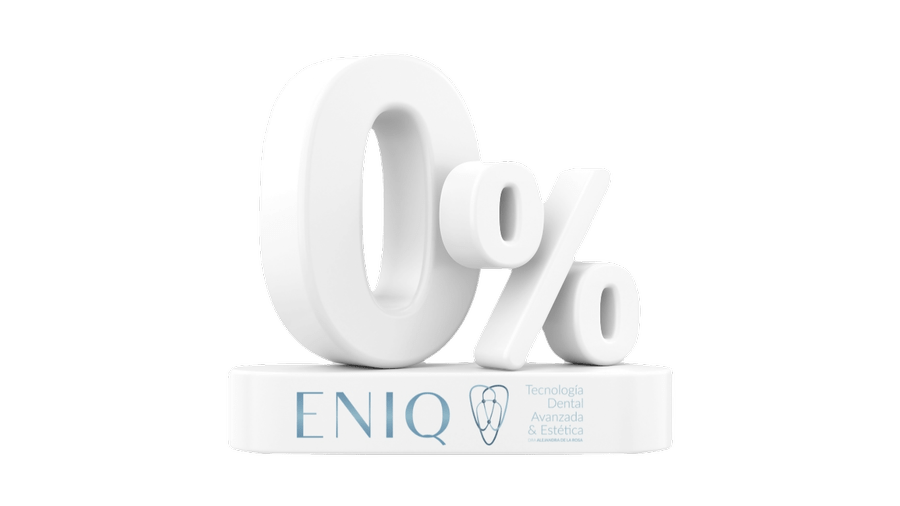

Orthodontics
Corrects dental alignment for improved health and aesthetics.
¿Qué es la ortodoncia y para qué sirve?
La ortodoncia dental es una rama especializada de la odontología que se enfoca en corregir los dientes y mandíbulas que están mal posicionados. Esta especialidad se ocupa de diagnosticar, prevenir y tratar las irregularidades dentales y faciales. La ortodoncia puede abordar problemas como el apiñamiento de los dientes, mordidas inadecuadas (como mordida abierta, mordida cruzada, sobremordida o submordida), y espacios excesivos entre los dientes.
El tratamiento ortodóntico implica el uso de dispositivos como brackets, alineadores transparentes, y retenedores, que ayudan a mover los dientes gradualmente a una posición más adecuada. Este proceso no solo mejora la apariencia de la sonrisa, sino que también contribuye a una mejor salud bucal, facilitando la limpieza de los dientes y reduciendo el riesgo de caries y enfermedades de las encías.
El tratamiento ortodóntico puede ser aplicado tanto en niños como en adultos, aunque es más común y eficaz durante la niñez y adolescencia, cuando los huesos todavía están en desarrollo. La duración del tratamiento varía según la complejidad del caso, pudiendo durar desde unos pocos meses hasta varios años.
Tipos de ortodoncia
Existen varios tipos de ortodoncia dental, cada uno con características específicas y adaptados a diferentes necesidades y preferencias. Los más comunes son:
- Brackets Metálicos: Son los más tradicionales y visibles. Están hechos de acero inoxidable y se fijan en la parte frontal de los dientes. Son efectivos para una amplia gama de correcciones dentales.
- Brackets Cerámicos: Funcionan igual que los metálicos, pero están hechos de materiales cerámicos que se mezclan mejor con el color natural de los dientes, haciéndolos menos visibles.
- Brackets de Zafiro: Son similares a los cerámicos, pero están hechos de zafiro transparente, lo que los hace aún menos notorios.
- Brackets Linguales: Se colocan en la parte posterior de los dientes, por lo que son invisibles desde el exterior. Son una opción estética, pero pueden ser más incómodos y difíciles de limpiar.
- Alineadores Transparentes: Son férulas removibles hechas de plástico transparente. Son casi invisibles y se pueden quitar para comer y limpiar los dientes. Invisalign es una de las marcas más conocidas de este tipo.
- Ortodoncia Autoligable: Utilizan brackets que no requieren ligaduras (bandas elásticas) para sujetar el arco. Esto puede reducir el número de visitas al ortodoncista y el tiempo total de tratamiento.
- Ortodoncia Funcional: Se utiliza principalmente en niños y se enfoca en modificar el crecimiento de la mandíbula y los huesos faciales, no solo en mover los dientes.
Cada tipo de ortodoncia tiene sus ventajas y desventajas, y la elección depende de factores como la severidad del problema dental, la estética, la comodidad, el costo y las preferencias personales. Un ortodoncista puede ofrecer asesoramiento y recomendaciones basadas en una evaluación individual.
Orthodontic Experts
Orthodontic Treatments

How Long Does Orthodontic Treatment Last?
The duration of orthodontic treatment varies significantly from one person to another, depending on several factors. Typically, treatment can last between 18 months and 3 years, but some cases may require more or less time. Factors influencing the treatment duration include:
- Complexity of the case: More complex dental issues, such as severely misaligned bites or severe crowding of teeth, often require more time to correct.
- Patient's age: Treatments in children and adolescents may be quicker because their bones and teeth are still developing and respond more effectively to treatment.
- Type of treatment: Different types of orthodontic appliances (such as metal braces, ceramic braces, lingual braces, or clear aligners) may have different treatment times.
- Patient's cooperation: Especially in treatments with removable aligners, effectiveness and duration largely depend on the patient's consistency in wearing them as directed.
- Overall oral health: Oral health issues, such as gum disease, can delay orthodontic treatment.
- Care of the orthodontic appliance: Breaking or damaging the orthodontic appliance can prolong the treatment.
It's important to have regular appointments with the orthodontist during treatment for necessary adjustments and follow-ups. The orthodontist can provide a more precise estimate of the treatment time after evaluating the individual patient's situation.
What Is the Best Type of Orthodontics?
There is no one "best" orthodontic treatment that universally applies, as the most suitable treatment depends on each patient's individual needs and circumstances. The choice of the right orthodontic treatment is based on various factors, such as the severity of the dental issue, the patient's age, aesthetic considerations, lifestyle, and budget.
What Is the Price of Orthodontics?
Price of Orthodontics with Metal Braces
As we've explained, orthodontics with metal braces is currently the most affordable option. In Spain, the prices for metal braces typically range from €2,300 to €3,200, approximately. However, it's important to note that all the prices mentioned in this article are indicative and depend mainly on the complexity and duration of the case being treated.
Price of Orthodontics with Sapphire Braces
Sapphire braces have a slightly higher cost compared to conventional metal orthodontics. Therefore, the prices for sapphire braces range from €3,000 to €4,200.
Price of Orthodontics with Damon Braces
The price of Damon braces is very similar to that of sapphire braces. Therefore, treatment with self-ligating brackets usually costs between €3,000 and €4,600. The slightly wider price range is due to the fact that within Damon orthodontics, there are two options: metal brackets and transparent brackets.
Price of Invisalign Orthodontics
Regarding Invisalign, we can also distinguish between two treatments: Lite (for simpler cases) and Comprehensive (formerly called Full), which is used for more complex malocclusions. Once this distinction is made, we can say that in Spain, the price of Invisalign orthodontics ranges from €3,100 to €5,600.

- Financing: Up to 24 months with no interest. Up to 60 months with preferential conditions.
- Payment installment: Pay for the treatment in comfortable monthly installments.
- We offer an early payment discount: Pay for the entire treatment upfront.
- Multiple payment options: Direct debit, credit card, cash, bank transfer, Apple Pay, Google Pay, and Bizum.
Orthodontics
Personalized Assessment
*subject to specialist evaluation
-
All-Inclusive
-
Interest-Free Financing
Frequently Asked Questions
Do you have more questions about orthodontics?
Orthodontics can cause discomfort or pain, especially after the initial placement of braces or aligners, and after regular adjustments made during the treatment. However, the level of pain varies from person to person and is usually temporary.
When orthodontic devices are applied or adjusted, they exert pressure on the teeth to gradually move them to their correct position. This pressure can cause pain or discomfort in the teeth and gums. Typically, this pain is most noticeable in the first few days after each adjustment and tends to diminish over time.
To manage the pain or discomfort, you can take measures such as:
- Over-the-counter pain relievers: Medications like ibuprofen can help alleviate pain.
- Soft foods: Consuming soft or liquid foods can reduce pressure on the teeth.
- Orthodontic wax: It can be useful to cover the edges of braces that may irritate the cheeks or gums.
- Careful oral hygiene: Maintaining good oral hygiene can prevent additional problems such as gum irritation.
It's important to remember that any pain or discomfort experienced during orthodontic treatment is generally temporary and a normal part of the dental realignment process. If the pain is severe or persistent, it's advisable to consult with the orthodontist.
Previously, certain complex malocclusions were not candidates for invisible orthodontics, but advances in the technique have expanded its scope. Currently, invisible orthodontics has been perfected to correct almost any challenge associated with dental alignment and occlusion.
The choice between invisible orthodontics and conventional braces depends on individual needs and preferences, as well as the professional recommendation of the orthodontist. Each method offers unique advantages and presents its own considerations.
Advantages of invisible orthodontics: It offers superior aesthetics with virtually invisible aligners, greater comfort by avoiding wires and brackets, and is removable for easier oral hygiene and eating.
Disadvantages of invisible orthodontics: It may be less effective for complex malocclusions, typically has a higher cost, and requires discipline for consistent aligner use.
Advantages of conventional braces: They are more effective for treating complex malocclusions, are usually more cost-effective, and do not require the same level of discipline as invisible orthodontics since they are a fixed solution.
Considerations about braces: They have a less aesthetic appearance, can cause discomfort or irritation, and require more attention to oral hygiene and dietary restrictions.
The final decision between invisible orthodontics and braces should be based on a detailed analysis of your specific needs and the guidance of a qualified orthodontist, considering effectiveness, aesthetics, comfort, and costs of each option.
Invisible orthodontics with transparent aligners is usually the least uncomfortable treatment. It is considered to be a generally painless orthodontic technique, both during its placement and throughout the treatment.
It is true that invisible orthodontics involves a brief period of adaptation, but this is typically shorter than the one required for braces, usually lasting no more than three or four days.
